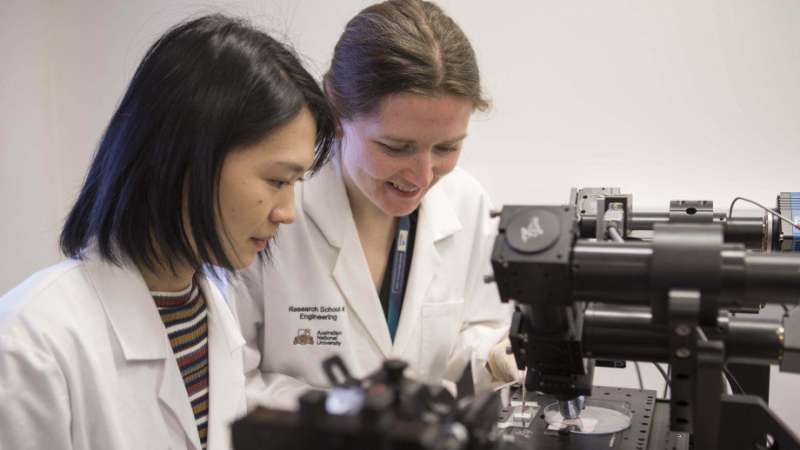Diagnostic device can prevent strokes and heart attacks

A team of engineers and biochemists at ANU has invented and trialled a bio-optics diagnostic device that can reveal the formation of blood clots and help doctors to identify patients at imminent risk of having a stroke or heart attack.
Millions of people around the world die from heart attacks and strokes every year.
Predicting the formation of a blood clot is challenging because of the dynamic environment in which a clot forms. Blood platelets, which are a tenth of the size of a regular cell, are the major drivers of blood clot formation and they clump together within seconds when triggered.
ANU biomedical engineer Dr. Steve Lee, from the ANU Research School of Engineering, and biochemist Associate Professor Elizabeth Gardiner, from the John Curtin School of Medical Research (JCSMR), are the research team leaders.
"Using the new diagnostic device that our team has developed, we can create and quantify clot formation in 3-D view from a blood sample without any form of labelling such as fluorescence or radiotracer—this had been impossible to achieve until now," Dr. Lee said.
Associate Professor Gardiner said that doctors treated people at risk of heart attack or stroke with blood-thinning medication, but there was no way to know a patient's susceptibility with precision—until now.
"We can apply this technology to blood from patients at risk of clotting or uncontrollable bleeding—this is a potential gamechanger," she said.
Sherry He, a CSC-Ph.D. scholar in Dr. Lee's group at the ANU Research School of Engineering, and Dr. Samantha Montague, a postdoctoral fellow from the Gardiner group at JCSMR, supported the development of the new diagnostic device.
"Our device creates a digital hologram of a microscopic blood clot at a fraction of a second by measuring the delay time for light to travel through the clot," Ms He said.
The team tailored a microfabricated device that can mimic a damaged blood vessel and created blood clots from human samples to reveal these blood-clotting events in the laboratory.
Ms He said the device can be fitted onto a regular microscope, but was not yet suitable to be used at the bedside.
"We need to shrink our diagnostic device, which takes up a fair amount of space in a research lab at the moment, to something that can fit into a shoebox so that it can be used in a clinical setting," she said.
Dr. Montague said the device would be further developed in tandem with existing clinical and platelet research practices.
"We have set up this new diagnostic device at JCSMR right alongside routine flow cytometry equipment that are the gold-standard for cell and blood platelet analysis," she said.
The work is published in Advanced Biosystems.
More information: Xuefei He et al. Quantifying Embolism: Label-Free Volumetric Mapping of Thrombus Structure and Kinesis in a Microfluidic System with Optical Holography, Advanced Biosystems (2018). DOI: 10.1002/adbi.201800089



















